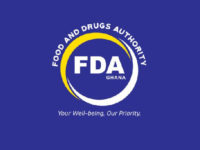 A researcher in the use of plastic materials has raised an alarm about the health risks associated with the use of plastic bowls, containers, polythene bags and ‘take away’ packs in the food and beverage industry.
A researcher in the use of plastic materials has raised an alarm about the health risks associated with the use of plastic bowls, containers, polythene bags and ‘take away’ packs in the food and beverage industry.
The researcher, Mr Dominic Gyamfi, said the storage of food and consumables in these containers was very dangerous to the health of consumers because they were produced from petrochemicals that leach into the food items and the drinks.
He told the Daily Graphic in an interview that the use of plastic for manufacturing water bottles, bagging water, manufacturing food packs and storing alcoholic beverages made the harmful chemicals they contained leach into the food and drinks “we eat and drink daily.”
“There is so much danger in eating food from plastics as harmful chemicals such as bisphenol A (BPA), phthalates, polyethylene (PETE) and antimony leach into food, water and other consumables and these activities put our lives at risk,” Mr Gyamfi stated.
According to him, the claim was based on secondary research he had conducted over the last three years with data that point to the fact that plastics were harmful to human health.
“When there were no plastics in the past, cancers and cardiovascular diseases, as well as infertility, diabetes and early menstruation were not as common as we have today.”
He described the use of plastic bowls, plates and cups in homes, offices and food joints, regardless of their colours, as dangerous once they “come into contact with food.”
“When hot food, salt and pepper are put in such bowls and plates, the chemicals they contain leach into the food and with time the colour of such bowls fades.
“Scientifically, plastics will fade, suggesting that the chemicals are leaching into the food we consume and this can cause blockages in our veins, leading to cardiovascular diseases such as hypertension, diabetes and stroke,” he said.
The chemicals, he added, slowed down the speed at which blood flowed into the heart and brain, making “us susceptible to all kinds of chronic diseases.”
In Ghana, food vendors have several ways of cooking and packaging food. These include wrapping banku in transparent plastics, covering rice on fire with polythene bags and even covering fante kenkey with plastics before wrapping it with leaves.
FDA responds
The claims have, however, been disputed by Mr Kofi Essel, a Principal Regulatory Officer of the Food and Drugs Authority (FDA), who insists that the assertion had no scientific evidence but was rather a product of desktop research.
“If someone talks about public health risk, it should be based on evidence so regulatory institutions can protect the public from such risk. There is no room for speculations so far as public health is at stake,” he said.
He also said the rate at which BPA leached into food was highly dependent on the temperature of the food, adding that the temperature at which food came into contact with such plastics in Ghana posed no danger to consumers.
“There are certain things you cannot totally eliminate. There are some amounts of chemicals that are allowed in food. The body has its own mechanism to excrete these chemicals.”
BPA ban
Concerns about some chemicals in food packaging have been taken seriously in recent years.
BPA, an industrial chemical used to make hard, clear plastic, which is also present in many bottles and metal food and drink cans, for which it is used as a lining, is to be banned from food packaging in France from 2015.
It is used to line cans to prevent corrosion and food contamination. It also makes plastic cups and baby and other bottles transparent and shatterproof.
According to some researchers, BPA is a known endocrine disruptor, which means it interferes with how hormones work in the body by blocking their normal function.
That chemical’s use in the manufacture of baby feeding bottles is already outlawed across Europe and the United States. In China, the penalty for using BPA to produce feeding bottles for babies is death.
Commenting on the ban of the use of the BPA in France, Mr Essel said the French regulator’s decision to ban the use of the chemical in plastics may be the result of risk assessment, which may point to the fact that their citizens may have been overexposed to the chemical hence the need to remove it from the market.
“If there is a serious public health risk, the total ban would be immediate. It might not be public health risk but probably consumer pressure.
“It is the consumers that do the buying. If they don’t want a particular product on the market because of A or B reasons, the regulator must take steps to do what is right, backed by scientific evidence,” he explained.
He, however, maintained that the fact that one country had prohibited or planned to ban the chemical did not mean that all others should do so without scientific evidence to back it.
In spite of its decision to ban the use of BPA in the manufacturing of plastic feeding bottles for babies, the Canadian Government, in September 2012, reaffirmed the safety of the chemical in food packaging, upholding its 2008 stance on the controversial chemical.
“Based on the overall weight of evidence, the findings of the previous assessment remain unchanged and Health Canada’s Food Directorate continues to conclude that current dietary exposure to BPA through food packaging uses is not expected to pose a health risk to the general population, including newborns and young children,” Health Canada’s Bureau of Chemical Safety wrote in its report.
The Canadian regulator was, however, quick to add that “to be clear, no assessment is ever final. Health Canada will continue to monitor the latest information around exposure to BPA and the safety of its use as a food packaging material.




